In Iran’s expansive Hyrcanian forests, some areas have attracted tourists over the years and host numerous visitors in many seasons. Forests of the northern Iran are famous for their easy accessibility, unique geographical position, and stunning landscapes. The deeper parts of the forest, while beautiful and unspoiled, remain inaccessible, thus preserving these areas.
Introduction to the Most Famous and Popular Forests of the North of Iran
Here, we introduce the most famous and beloved Forests of the northern Iran, forming the Hyrcanian forests. Some of these forests have unique characteristics and features. While some are part of national parks, others are among protected areas.
Golestan National Park
Golestan National Park covers about 900 square kilometers in eastern Golestan Province and western North Khorasan Province. It’s known globally as a biosphere reserve. Arasbaran National Park in East Azerbaijan Province is another protected area of Iran’s Hyrcanian forests, spanning nearly 9,000 hectares. These two national parks are among the most significant parts of the Hyrcanian forests, surrounded by other famous forests in these protected areas.
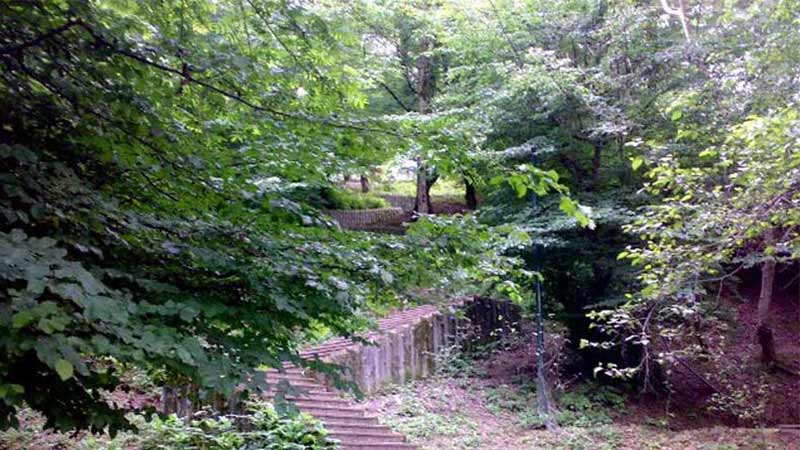
Alimastan Forest
The Alimastan Forest is among the most beautiful parts of the northern Hyrcanian forests in Iran. The misty environment with towering trees offers delightful trekking towards Mount Alimastan. Located near Amol, it’s named after the “Alima” vegetation covering it in May. Alimastan Forest is a small part of a larger protected area of the same name, spanning nearly 400 hectares. Due to varied elevations, different plants grow in various parts of the forest. You’ll encounter diverse climates while hiking or trekking here, with some areas sunny and humid, others rainy and foggy, and you’ll come across dense, tree-filled parts and green meadows and plains. Interested in Iran hiking tours? click here.
The peak and village of Alimastan are among the forest’s most beautiful attractions. The trekking path to the peak becomes spectacular in winter, while in spring, especially in May, it’s covered in colorful flowers. The “Qalardan” area, part of this path, becomes covered in Echium amoenum flowers during this time.
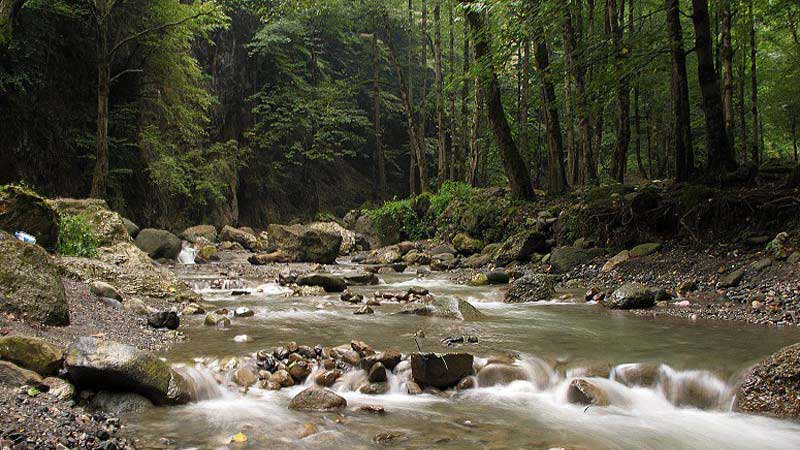
Shahroud’s Cloud Forest
One of the most picturesque forested areas in Iran’s Hyrcanian forests is Shahroud’s Cloud Forest, highly popular among tourists and Iran nature lovers. The “cloud forest” phenomenon occurs with clouds penetrating the forest through the mountains, creating beautiful scenery. In some parts, you can walk on clouds and enjoy the beauty of the mist- and cloud-covered forest.
Located about 40 kilometers northeast of Shahroud, bordering Semnan and Golestan provinces, this forest covers approximately 35,000 hectares, making it one of the highest parts of the Hyrcanian forests. The temperature in Shahroud’s Cloud Forest reaches up to 20 degrees Celsius in the warmest seasons and around 6 degrees Celsius in the coldest. Its higher areas are covered with meadows and grasslands, while its lower areas have fruit trees and raspberry bushes.
In 2019, Shahroud’s Cloud Forest was listed as a national and natural heritage of Iran. Since 2014, it has been considered a protected area under the Environmental Protection Agency. Various plant species, including oak, maple, hornbeam, and ash trees, form its vegetation. Fruit trees and medicinal plants are also part of this forest’s flora. The forest is home to wildlife like brown bears, leopards, wolves, wild boars, foxes, roe deer, and goats, and birds such as partridges, wood pigeons, quails, eagles, vultures, doves, falcons, and pheasants.
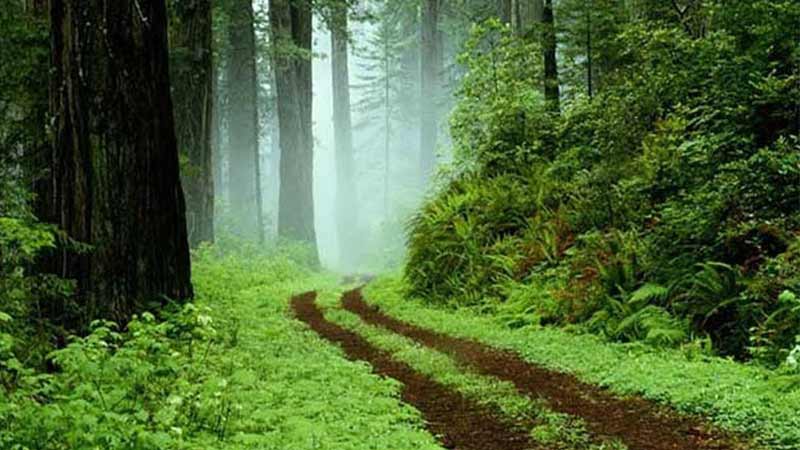
Bula Forest, Sari
The Bula Forest, a protected area near the city of Sari in Mazandaran Province, encompasses vast protected regions including the Dodangeh and Chahardangeh wildlife sanctuaries. Covering nearly 4,000 hectares, it’s close to Kiasar National Park. The Bula protected area has been under the supervision of the Environmental Protection Agency since 1999.
The Bula Forest has significant elevation differences in its various parts and is situated on the steep northern and southern mountain slopes. In its higher areas, you’ll find alpine meadows, plains, and extensive grasslands. The steep slopes, being inaccessible, serve as safe havens for various wildlife species.
Among the important wildlife in Bula Forest are leopards, wolves, wild boars, foxes, deer, brown bears, goats, and roe deer. Among the birds are partridges and Caspian snowcocks. Dense boxwood shrubs cover the forest, and trees like beech, hornbeam, alder, and maple grow here. The forest and Bula Waterfall, with their pristine and untouched areas, have been targeted by wood poachers over the years. Wandering in remote parts of this forest without a knowledgeable guide can be very dangerous.
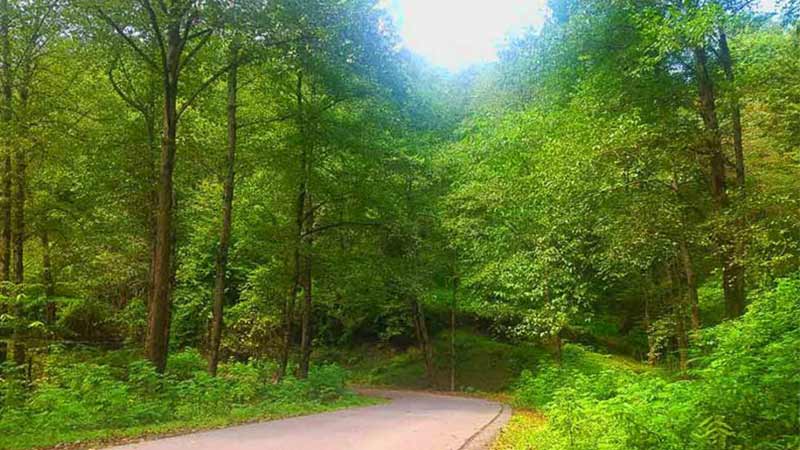
Vaz Forest
The Vaz Forest in Mazandaran Province is located near Chamestan Forest in the Nur County. It’s considered one of the most pristine Hyrcanian Forests of the northern Iran, with extraordinary natural attractions. The beauty of Vaz Forest is particularly striking in autumn, with its trees and bushes turning yellow and orange, creating spectacular landscapes.
The access road to Vaz Forest is a dirt path that eventually leads to a mountainous forest. This road is often foggy throughout the year and covered with snow in winter. The surrounding villages offer beautiful natural scenery and suitable accommodations in local guesthouses.
Covering over 9,000 hectares, Vaz Forest has been a protected area under the Environmental Protection Agency since 2001. The forest is crisscrossed by roaring rivers, adding to its humidity and resulting in the growth of lush meadows nearby. Some areas have very steep slopes, fostering the growth of rock plants. Various bush and forest plants grow here, and the flowing waters in the rivers create favorable conditions for diverse plant life. Animals such as leopards, wild boars, jackals, brown bears, red deer, wild goats, and partridges live in this forest.
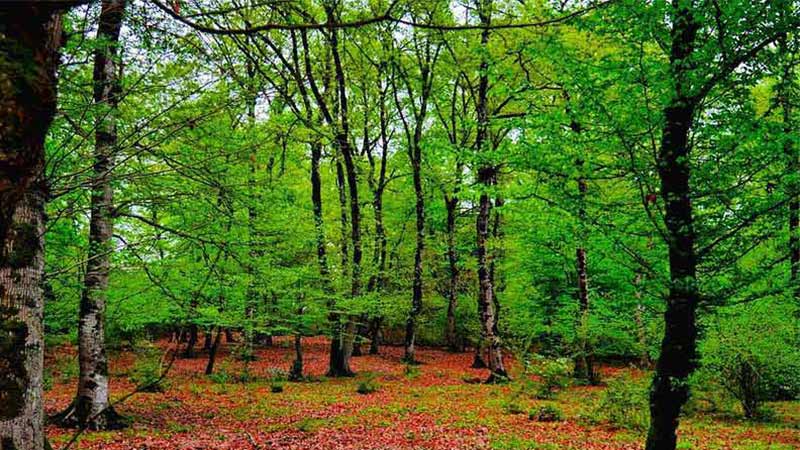
Kojur Forest, Nowshahr
Kojur Forest, located in Mazandaran Province between the cities of Chalus and Nur, covers more than 24,000 hectares, with 14,000 hectares officially registered. The different elevations in the forest vary, and many parts have slopes steeper than 30%. Its close proximity to the Caspian Sea and central location in the northern forests make it the heart of the Hyrcanian forests. Kojur Forest is a short distance from Sisangan Park.
Situated in a mountainous area between Damavand and Alam-Kuh mountains, its climate is greatly influenced by the surrounding mountains, resulting in very cold and snowy winters. Heavy rainfall in autumn and spring has resulted in diverse vegetation. Numerous villages around the Kojur forest area thrive on agriculture.
This area was once one of the primary habitats of the Persian leopard, and other wildlife in Kojur Forest includes bears, deer, roe deer, wild boars, hedgehogs, porcupines, and rabbits. Birds such as eagles, falcons, pheasants, partridges, quails, and woodpeckers are also abundant.
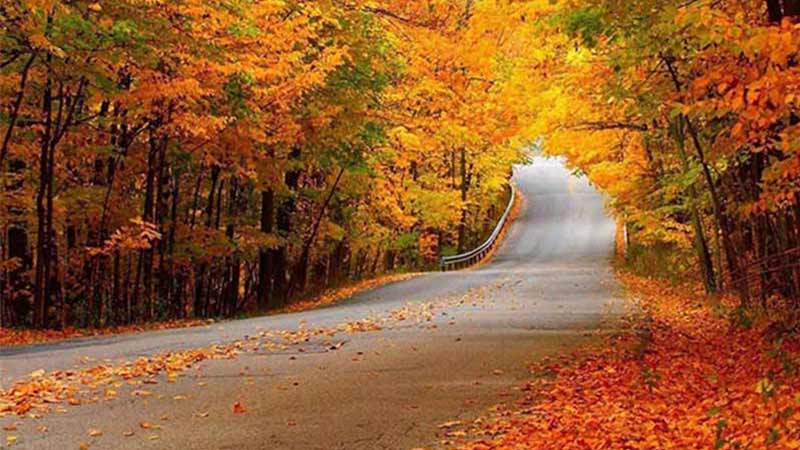
Lisar Forest
The protected area of Lisar is located in the northern part of Talesh County in Gilan Province. Situated in a mountainous area near the coast, Lisar Forest has both lowland and highland parts. The name Lisar comes from the vegetation, particularly the growth of “Li” or Alder trees. The beautiful and pastoral region of Soubatan is within this forest.
In recent years, many of the forest lands in Lisar have been lost, replaced by barren lands and residential areas. This trend has significantly reduced the population of carnivorous mammals, while rodents have flourished. However, diverse wildlife species such as red deer, lynx, leopards, goats, sheep, foxes, roe deer, and bears still inhabit the forest. Various birds, especially birds of prey, are also seen here.
The vegetation of Lisar Forest is mostly broad-leaved Hyrcanian trees. Among the most famous plant species are beech, hornbeam, alder, poplar, maple, and wild privet trees. Shrubs like wild pomegranate, wild tomato, raspberry, and lilac, along with herbaceous plants like clover and nettle, are found throughout the forest.
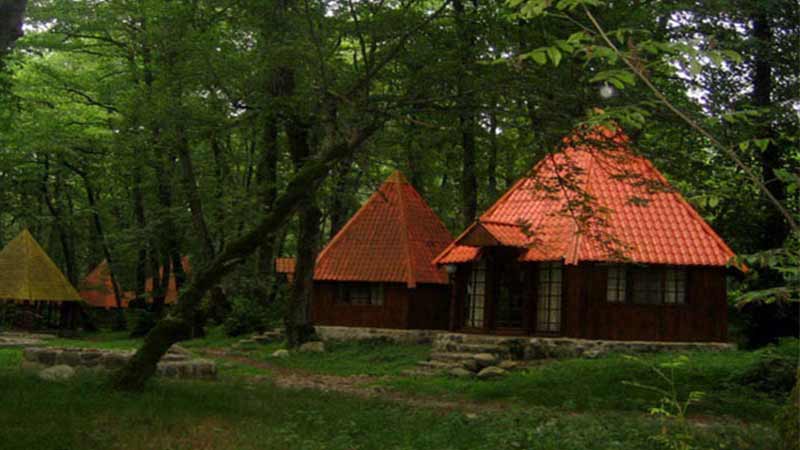
Chaharbagh Forest, Chalus
The Chaharbagh Forest in Chalus, a protected area in Mazandaran Province, is located near the Siah Bisheh area, along the 90th kilometer of the Karaj-Chalus road. Several villages, including Delir, Ilteh, Nokers, Kejan, Angoran, and Puladkoh, are part of the Chaharbagh forest. Since 2001, it has been protected by the Environmental Protection Agency and recognized as a protected area.
The protected area of Chaharbagh covers over 19,000 hectares and includes steep forested slopes and perennial, full-flowing rivers. However, the officially registered area of this forest site is about 6,800 hectares. The region has a cold and semi-humid climate. Chaharbagh Forest comprises parts of the deep valleys and central Alborz mountains, with some areas densely forested and others covered in alpine meadows and green grasslands. Like other Forests of the northern Iran, meadows and plains are situated at higher altitudes. Significant rivers flowing through this forest include the Angoran and Makaroud.
Various plant species thrive in this forest, serving as a crossroads for different Hyrcanian plants in Iranian and Turanian species. The elevation variance in different parts of Chaharbagh creates a wide diversity of trees, shrubs, and grasses. Wildlife includes species like brown bears, leopards, red deer, roe deer, foxes, wolves, hedgehogs, jackals, otters, and wild cats. Birds such as the golden eagle, vulture, Caspian snowcock, common pheasant, and wood pigeon are also seen in this forest.
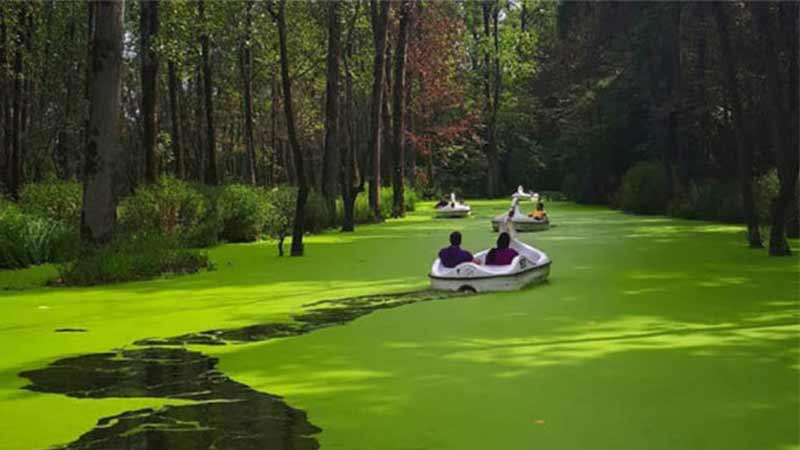
Khoshkedaran Forest of Tonekabon
The Khoshkedaran Forest Park is the only lowland forest in northern Iran, covering approximately 2.6 million square meters. It is the last remnant of the lowland forest ecosystem and, therefore, home to unique plant and animal species. This forest lies between the cities of Nashtarood and Abbasabad, 30 kilometers from Tonekabon, on the Tonekabon-Chalus route. Its short distance from the sea creates a unique geographical situation for the forest.
Despite its smaller size compared to other forested areas in northern Iran, Khoshkedaran boasts significant biodiversity. Various plants grow here, including oak, pomegranate, and several unique tree species. Shrubs like boxwood, wild medlar, and wild jasmine are also found throughout the forest. Endangered plant species like the hairy tussocks are also present.
Khoshkedaran is diverse in its wildlife as well. Wild animals like boars, wolves, jackals, and wild cats inhabit the forest. Bird species include the grey heron, black kite, geese, various ducks, great cormorants, and both large and small egrets. Unfortunately, much of Khoshkedaran Forest has suffered damage in recent years due to human activities.
Conclusion
A closer examination of Forests of the northern Iran, which form a significant part of the Hyrcanian forests, highlights the urgent need to preserve natural resources in these areas. Remember, the world’s natural resources are remnants of many years and many will not regenerate or will take centuries to do so. However, with the current rate of destruction, this seems impossible. Protecting the Hyrcanian forests is crucial for the survival of future generations.
If you’re interested in forest exploration and witnessing the beauty of Iran’s northern Hyrcanian forests, share your experiences with us. Reading your comments will be a pleasure for us and other users.



